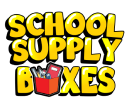It not hard to believe in a world of smart phones, tablets, and so much technology that people still don’t know the difference between the different types of writing paper used for schools. After all, fewer and fewer children are being taught handwriting in schools and many are learning to type on a QWERTY board much earlier than the previous generations.
Picture this: You’re in a store shopping for back to school supplies for your kids instead of using School Supply Boxes. You could have had school supplies shipped directly to your door, but you prefer to do things the old-fashioned way.
You need to scratch loose leaf paper off the list. On the shelves, you see wide rule and college ruled notebook paper. Luckily for you, your son or daughter’s teacher wrote specifically the type of paper needed for their grade. But what if you didn’t look at the list and picked up any pack of notebook paper you found? Would there be any major difference? Isn’t all filler paper created equal?
At first glance, it’s easy to spot the difference. The “ruled” lines are wider apart on the wide ruled paper than they are on college ruled paper, hence the name. There are six other types of paper that have specific uses but are not often seen. Other paper types include:
- Junior Legal Ruled Paper - Used in junior legal pads
- Manuscript Paper - Used for teaching children how to write letters as it has a dotted line between the top and bottom ruled lines
- Pitman Ruled Paper – 1/2 inch spacing between ruled lines used for stenography
- Gregg Ruled Paper – 11/32 spacing between ruled lines also used for stenography
For elementary school aged children, wide ruled paper is the preferred choice for students from kindergarten up to 4th grade. The ruled lines are 11/37 inches apart and are for children still learning to write letters and numbers as well as for persons who have larger than average handwriting.
Middle school, high school, and college students use medium or “college” ruled paper, with 9/32 inch spacing between lines. This is the type of paper has lines closer together to allow more writing on a single page. The term “college” is a colloquialism used to denote students have graduated from using wide ruled paper. Older kids usually have handwriting which is smaller than younger children and don’t need the larger spacing. Though, teenagers and college students would much prefer wide ruled paper for writing essays and book reports.
A far more less common type of paper is called narrow paper. As the name denotes, narrow paper has lines which are closer together, ¼ inch spacing, and are used for people who have smaller handwriting and allows for more writing per page.
Regardless of the brand of loose-leaf paper you buy, wide ruled and college ruled paper will all have the same type of spacing. There is also practically no difference in the quality of ruled paper from brand to brand. This is not the same, however, when it comes to computer printer paper as it has various types of printing uses and is often categorized by weight, type, and color.
Before you pick up the car keys and head to the store to buy paper, pencils, or everything else on the school supply list, take a look at School Supply Boxes and scratch “school supplies” off of your back to school list of things to buy.



Comments (0)
There are no comments for this article. Be the first one to leave a message!